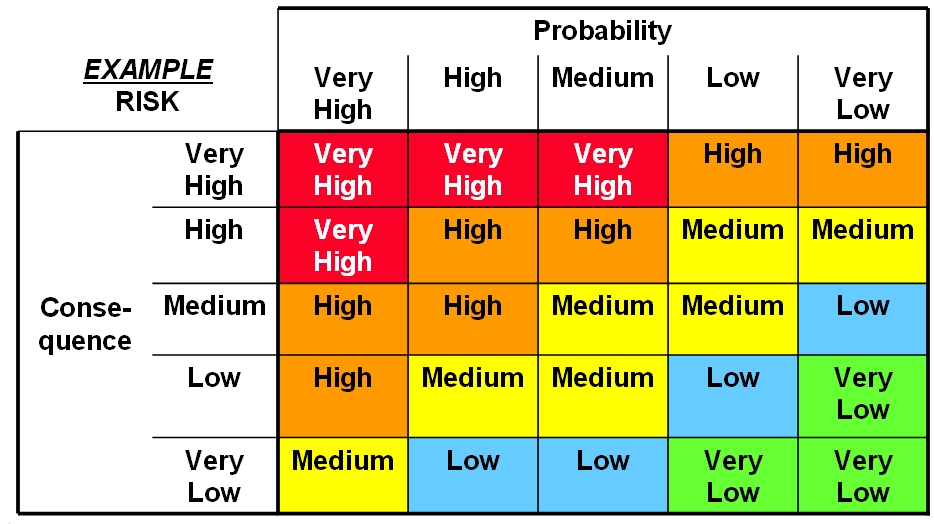

The risk with the highest risk score is ranked first in priority, the risk with the next highest risk score is ranked second in priority and so forth. Risk Score is used to rank a risk's priority relative to the other identified risks. The table below summarizes the results of the scoring and risk ranking process described above. The overall Rating of an identified project risk is rated Low (in the project's RAW) if the Score for that risk falls between 0 and 0.35.The overall Rating of an identified project risk is rated Moderate (in the project's RAW) if the Score for that risk is greater than or equal to 0.35 and less than 0.65.The overall Rating of an identified project risk is rated High (in the project's RAW) if the Score for that risk is greater than or equal to 0.65 and less than one.


In equation 1, U 1 is the risk's Probability with importance weight w 1, U 2 is the Impact Score with importance weight w 2, and U 3 is the equivalent numerical value for the risk's Timeframe with importance weight w 3. Formally, this scoring model originates from the concept of linear utility.ĭefinition: The Impact Score of an identified risk is the average of the three equivalent numerical values associated with the risk impact ratings selected for the three impact areas Cost, Schedule, and Technical Performance.ĭefinition: The Risk Score (equation 1) of an identified risk is the weighted average of the equivalent numerical values associated with the risk's Probability, Impact Score, and Timeframe. This score provides a most-to-least critical rank order of the risks. Reference: Pocket Guide to Operational Risk ManagementĪ weighted average model is used to compute an overall score for each identified risk. This process defines the probability and severity of an undesirable event that could result from the hazard. The assessment step is the application of quantitative or qualitative measures to determine the level of risk associated with a specific hazard. Risk is the probability and severity of loss from exposure to the hazard. Operational Risk Management Risk Prioritization Gen (USAF) Commander ESC, January Memorandum for ESC Program Managers, ESC/CC, Risk Management, Department of the Air Force, Headquarters ESC (AFMC) Hanscom Air Force Base, MA. The risk rating is based on the probability of impact and the level of impact (manual mapping approach): Cost Risk and Uncertainty - Chapter 14, GAO Cost Estimating and Assessment Guide, Mar 09Īcquisition Risk Management Risk Prioritization.AFMC Instruction 90-902: Operational Risk Management, Dec 2007.AFI 90-901: Operational Risk Management, 1 April 2000.AF Policy Directive 90-9: Operational Risk Management, 1 April 2000.Process Assets Standard Process Definitions: Risk Management - Standard Process/Definitions: Priority


 0 kommentar(er)
0 kommentar(er)
